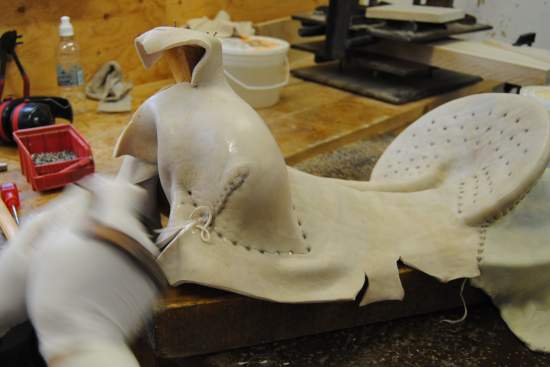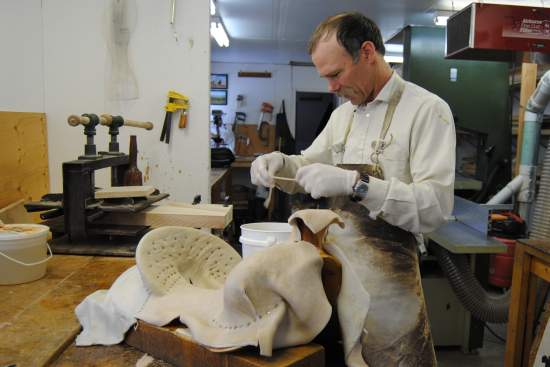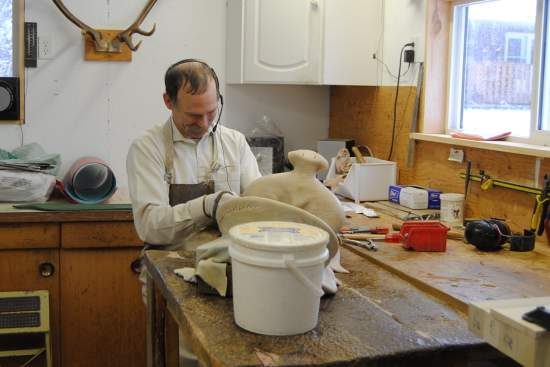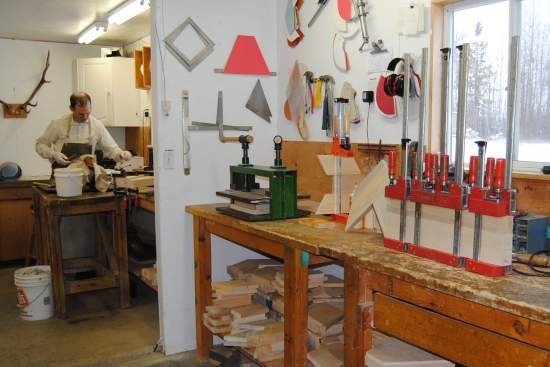Today in the shop
We are no longer building saddle trees, but we have two videos about how Western saddles fit horses available on our westernsaddlefit.com website.

Rod is finishing rawhiding the trees he had built before we went to Edmonton to the Artisans Show at the Heritage Ranch Rodeo. Here he is stitching the front seams of a lighter weight hide on a 12” wood post Packer tree. This tree is going to a local lady and she is concerned about weight, so we are using a lighter cow hide to cover it and chose a lighter weight board for the bars . The individual boards vary in density and therefore in weight. When we find a light one we label it and set it aside to use in trees that are ordered to be lighter in weight.

One seam done. One to go! The seam has been cut and the rawhide tacked down around the fork. Now it is ready to stitch. Rod is getting the deer hide lace out of the bucket in which it has been soaking. When stitching with the lace, it isn’t just cased. It is soaking wet. We like the deer hide for the strength it has while still stretching and sucking down tight when you stitch with it.

Stitching rawhide is a great time to talk on the phone, so long as the headset works! The rawhide we use takes about two weeks to dry. A thinner hide like this may be done a few days earlier while some really heavy hides take longer, but two weeks is a good average. It is surprising how long they keep on losing weight even after they appear to be totally dry. So our practice is that when Rod rawhides a tree, he calls the customer and lets them know the stage it is at, and the total cost still owing on the tree. That way there is time enough for the cheque to get here before the tree is ready to go, and nothing will slow down us shipping it out.

While Rod is rawhiding, I am gluing wood for the next set of trees. The eight red clamps are holding a bar I am laminating. We don’t laminate all our bars as we have found the wood we use to be strong enough without it, but it never hurts and it does let us use the yellow poplar more efficiently. I also have pieces clamped side to side to make the layers that go into a Wade fork. In the glue press is a cantle gluing up, and just beyond the wall there is another bar in a second glue press getting the extra pieces added on top that are needed for the extra thickness required in a couple of places. Below the bench are some glued up forks and a lot of wood that has been cut, planed, thicknessed, edged and is ready to be glued together over the next few days.
So that is what we have been doing today.
